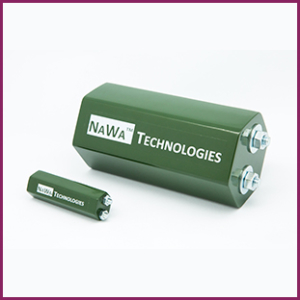
Breaking News
We Americans Need to Dig Deep into Historical Perspective
 A timeless clip of Michael Burry explaining how he used credit default swaps...
A timeless clip of Michael Burry explaining how he used credit default swaps...
 The next financial crisis won't start in a bank lobby. It's already brewing in the market
The next financial crisis won't start in a bank lobby. It's already brewing in the market
Top Tech News
 This tiny dev board is packed with features for ambitious makers
This tiny dev board is packed with features for ambitious makers
 Scientists Discover Gel to Regrow Tooth Enamel
Scientists Discover Gel to Regrow Tooth Enamel
 Vitamin C and Dandelion Root Killing Cancer Cells -- as Former CDC Director Calls for COVID-19...
Vitamin C and Dandelion Root Killing Cancer Cells -- as Former CDC Director Calls for COVID-19...
 Galactic Brain: US firm plans space-based data centers, power grid to challenge China
Galactic Brain: US firm plans space-based data centers, power grid to challenge China
 A microbial cleanup for glyphosate just earned a patent. Here's why that matters
A microbial cleanup for glyphosate just earned a patent. Here's why that matters
 Japan Breaks Internet Speed Record with 5 Million Times Faster Data Transfer
Japan Breaks Internet Speed Record with 5 Million Times Faster Data Transfer
 Advanced Propulsion Resources Part 1 of 2
Advanced Propulsion Resources Part 1 of 2
 PulsarFusion a forward-thinking UK aerospace company, is pushing the boundaries of space travel...
PulsarFusion a forward-thinking UK aerospace company, is pushing the boundaries of space travel...
 Dinky little laser box throws big-screen entertainment from inches away
Dinky little laser box throws big-screen entertainment from inches away
 'World's first' sodium-ion flashlight shines bright even at -40 ºF
'World's first' sodium-ion flashlight shines bright even at -40 ºF
Ultra Capacitor Tech Again Touted As EV Game-Changer

The ultracapacitor itself with energy density of 15 Wh/kg (below that of lead acid batteries) are not battery replacements in any way, shape or form, but according to NAWA integration of ultracapacitors into the battery pack could be handy.
The reason is high power output of up to 100 kW/kg (in the future NAWA would like to achieve 500 kW/kg and 25 Wh/kg).
If ultracapacitors would be able to take care of acceleration and regenerative braking power surges, manufacturer would be able to use battery cells that are more energy dense, but can't withstand high power. At least that is the theory, because in many cases batteries do just fine with typical power levels in a car.
Maybe that's why NAWA Technology mentions Formula E – a performance application – in which ultracapacitors would lower weight of the battery by 30%.

 The AI money machine!
The AI money machine!

